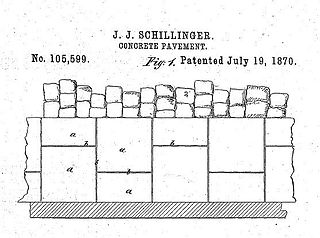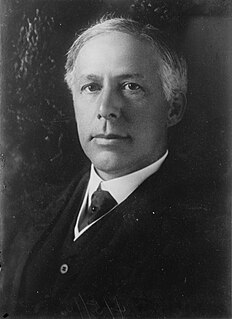
The Supreme Court of the United States (SCOTUS) is the highest court in the federal judiciary of the United States of America. It has ultimate appellate jurisdiction over all federal and state court cases that involve a point of federal law, and original jurisdiction over a narrow range of cases, specifically "all Cases affecting Ambassadors, other public Ministers and Consuls, and those in which a State shall be Party". The Court holds the power of judicial review, the ability to invalidate a statute for violating a provision of the Constitution. It is also able to strike down presidential directives for violating either the Constitution or statutory law. However, it may act only within the context of a case in an area of law over which it has jurisdiction. The Court may decide cases having political overtones, but it has ruled that it does not have power to decide non-justiciable political questions.

The United States courts of appeals or circuit courts are the intermediate appellate courts of the United States federal judiciary. The courts are divided into 13 circuits, and each hears appeals from the district courts within its borders, or in some instances from other designated federal courts and administrative agencies. Appeals from the circuit courts are taken to the Supreme Court of the United States.
Plessy v. Ferguson, 163 U.S. 537 (1896), was a landmark decision of the U.S. Supreme Court that upheld the constitutionality of racial segregation laws for public facilities as long as the segregated facilities were equal in quality – a doctrine that came to be known as "separate but equal". The decision legitimized the many state laws re-establishing racial segregation that had been passed in the American South after the end of the Reconstruction Era (1865–1877).
In law, certiorari is a court process to seek judicial review of a decision of a lower court or government agency. Certiorari comes from the name of an English prerogative writ, issued by a superior court to direct that the record of the lower court be sent to the superior court for review. The term is Latin for "to be made certain", and comes from the opening line of such writs, which traditionally began with the Latin words "Certiorari volumus...".
Bolling v. Sharpe, 347 U.S. 497 (1954), is a landmark United States Supreme Court case in which the Court held that the Constitution prohibits segregated public schools in the District of Columbia. Originally argued on December 10–11, 1952, a year before Brown v. Board of Education, Bolling was reargued on December 8–9, 1953, and was unanimously decided on May 17, 1954, the same day as Brown. The Bolling decision was supplemented in 1955 with the second Brown opinion, which ordered desegregation "with all deliberate speed". In Bolling, the Court did not address school desegregation in the context of the Fourteenth Amendment's Equal Protection Clause, which applies only to the states, but rather held that school segregation was unconstitutional under the Due Process Clause of the Fifth Amendment to the United States Constitution. The Court observed that the Fifth Amendment to the United States Constitution lacked an Equal Protection Clause, as in the Fourteenth Amendment to the United States Constitution. The Court held, however, that the concepts of Equal Protection and Due Process are not mutually exclusive, establishing the reverse incorporation doctrine.

The United States District Court for the Middle District of Alabama is a federal court in the Eleventh Circuit.
In law, a per curiam decision is a ruling issued by an appellate court of multiple judges in which the decision rendered is made by the court acting collectively. In contrast to regular opinions, a per curiam does not list the individual judge responsible for authoring the decision, but minority concurring and dissenting decisions are signed.
Title 28 is the portion of the United States Code that governs the federal judicial system.
United States v. Moreland, 258 U.S. 433 (1922), was a case heard by the Supreme Court of the United States on March 9 and 10, 1922, and decided a month later on April 17. The case involved a Fifth Amendment rights issue centering on whether or not hard labor was an infamous punishment or whether imprisonment in a penitentiary was a necessity for punishment to be considered infamous.
Ball v. United States, 163 U.S. 662 (1896), is one of the earliest United States Supreme Court cases interpreting the Double Jeopardy Clause.
The Court of Claims was a federal court that heard claims against the United States government. It was established in 1855, renamed in 1948 to the United States Court of Claims, and abolished in 1982. Then, its jurisdiction was assumed by the newly created United States Court of Appeals for the Federal Circuit and United States Claims Court, which was later renamed the Court of Federal Claims.

Talton v. Mayes, 163 U.S. 376 (1896), was a United States Supreme Court case, in which the court decided that the individual rights protections, which limit federal, and later, state governments, do not apply to tribal government. It reaffirmed earlier decisions, such as the 1831 Cherokee Nation v. Georgia case, that gave Indian tribes the status of "domestic dependent nations," the sovereignty of which is independent of the federal government.
Herring v. United States, 555 U.S. 135 (2009), was a case decided by the Supreme Court of the United States on January 14, 2009. The court decided that the good-faith exception to the exclusionary rule applies when a police officer makes an arrest based on an outstanding warrant in another jurisdiction, but the information regarding that warrant is later found to be incorrect because of a negligent error by that agency.

Schillinger v. United States, 155 U.S. 163 (1894), is a decision of the United States Supreme Court, holding that a suit for patent infringement cannot be entertained against the United States, because patent infringement is a tort and the United States has not waived sovereign immunity for intentional torts.

Willis Van Devanter was an American lawyer who served as an Associate Justice of the Supreme Court of the United States from 1911 to 1937.

A certificate of division was a source of appellate jurisdiction from the circuit courts to the Supreme Court of the United States from 1802 to 1911. Created by the Judiciary Act of 1802, the certification procedure was available only where the circuit court sat with a full panel of two: both the resident district judge and the circuit-riding Supreme Court justice. As Chief Justice John Marshall wrote, he did not have "the privilege of dividing the court when alone."
Lucas v. United States, 163 U.S. 612 (1896), was a United States Supreme Court case in which the Court held that whether a Negro freedman was a member of the Choctaw Nation was a question of fact for the jury, and his non-Indian status may not be presumed.
Wong Wing v. United States, 163 U.S. 228 (1896), was a United States Supreme Court case in which the Court found that the 5th and 6th Amendments to the U.S. Constitution forbid the imprisonment at hard labor without a jury trial for non citizens convicted of illegal entry to or presence in the United States.
Bell v. Cone, 535 U.S. 685 (2002), was a Supreme Court of the United States case that upheld a death sentence despite the defendant's argument that he should not be sentenced to death because he was suffering from drug-induced psychosis when he committed the crimes. Cone also argued that he was denied effective assistance of counsel because his attorney failed to present sufficient mitigating evidence during the sentencing phase of his trial and that his attorney inappropriately waived his final argument during the sentencing phase. In an 8–1 opinion written by Chief Justice William Rehnquist, the United States Supreme Court denied Cone's petition for a writ of habeas corpus. The Court held that the actions taken by Cone's attorney during the sentencing phase were "tactical decisions" and that the state courts that denied Cone's appeals did not unreasonably apply clearly established law. Justice John Paul Stevens wrote a dissenting opinion in which he argued that Cone was denied effective assistance of counsel because his attorney failed to "subject the prosecution's case to meaningful adversarial testing."
Brady v. Daly, 175 U.S. 148 (1899), was a United States Supreme Court case in which the Court held the common law circuit court did have jurisdiction over the copyright infringement case because the statutory damages were not a penalty or forfeiture.







